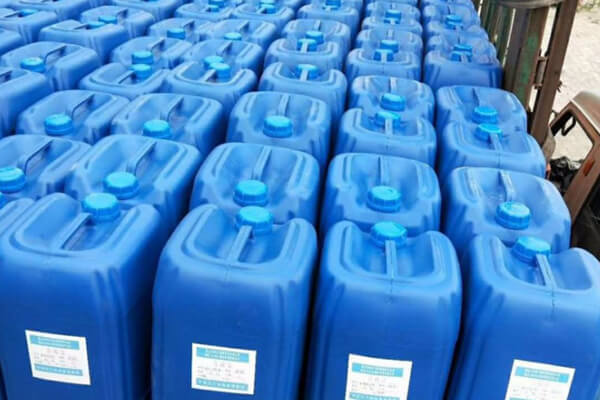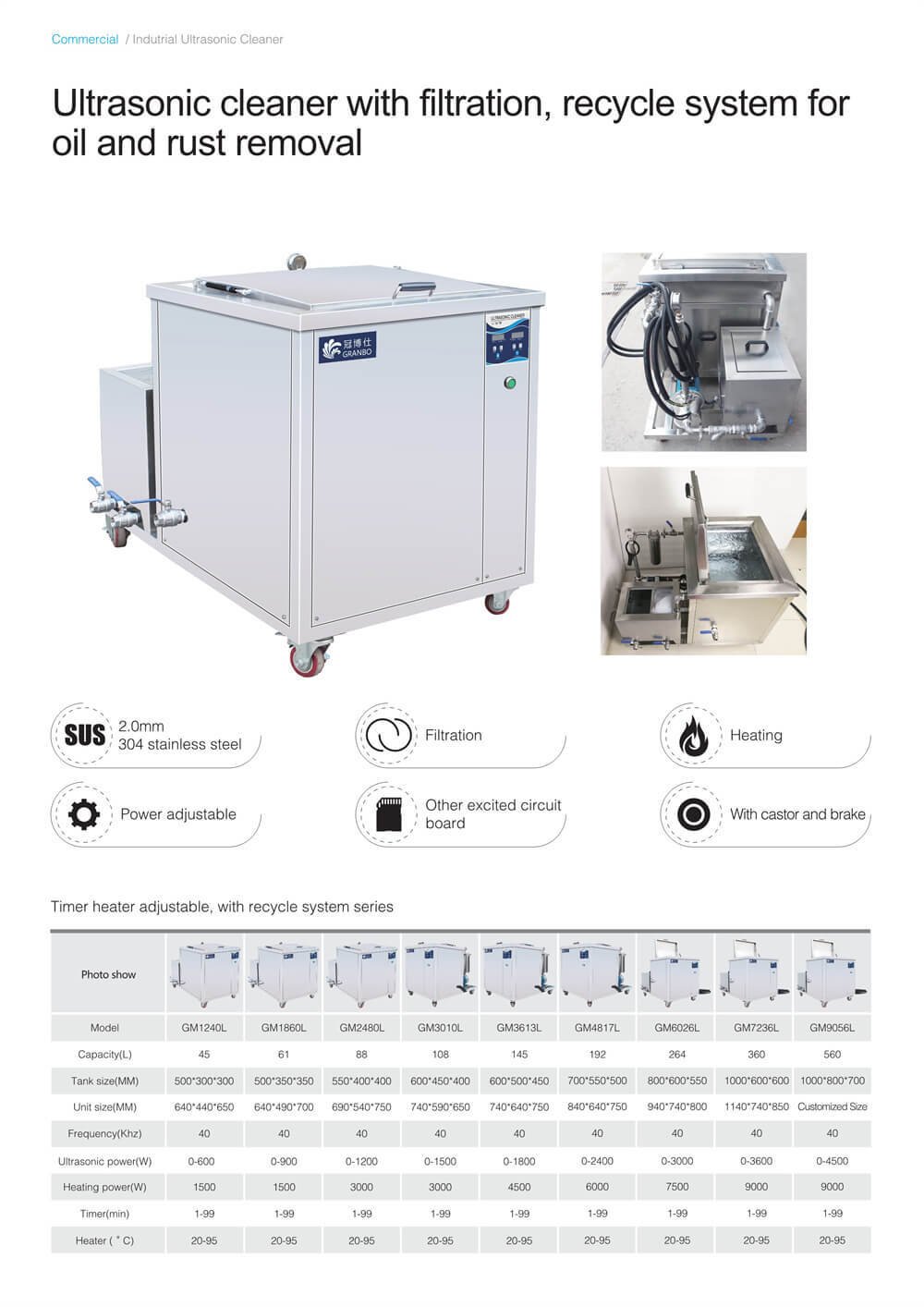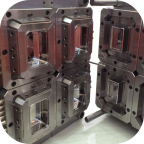Can You Reuse Ultrasonic Cleaning Solution?
Browse Volume:68 Classify:Support
If you’ve ever used an ultrasonic cleaner, you know the routine—it hums to life, resonant waves ripple, and what once seemed impossible to clean—tiny gears, stained jewelry, oily parts—comes out almost magically spotless. But after a few cycles, the solution in the tank looks murky, maybe even colored, and your next thought is understandable: Can I just reuse the ultrasonic cleaning solution? It’s tempting to squeeze out more life from that bubbly bath, but what happens when maintenance meets real life? Let’s explore.

Cleaning fluid
The Appeal of Reuse: Economics and Sustainability
It’s human nature to value thrift. You paid for that cleaning detergent; using it once feels wasteful. In workshop spaces or dental clinics, where cleaning cycles are constant, the cost and environmental benefit of reuse aren’t negligible. With prices for professional-grade ultrasonic detergents ranging from $30 to $100 per gallon, it’s easy to wonder whether you’re using a brand-new bath every time you clean.
But even though intuitively recycling seems efficient, ultrasonic cleaning isn’t like pairing down laundry detergent. Each use degrades effectiveness, introduces contaminants, and can—even subtly—risk your equipment or parts.
What Happens to the Solution With Each Cycle?
When your ultrasonic cleaner activates, it isn’t just washing away grime—it’s collecting residue from all angles. Oils, metals, carbon particles, carbonized protein, biofilms—all are drawn into the solution, building up with each use. That murky clarity you notice isn’t harmless discoloration; it’s concentrated contaminants that reduce cavitation potency.
Imagine making coffee again and again in an uncleaned pot—it becomes weaker each time, and flavors muddle. Ultrasonic baths operate similarly.
Cleaning effectiveness isn’t only about physical agitation—detergent chemistry is essential too. Surfactants become saturated, pH drifts out of ideal range, and efficiencies decline. Clinical studies show that reuse without replenishing leads to a measurable drop in debris removal—worse results and wasted cycles.
How Much Can You Reuse? Key Guidelines
Not all reuse practices are black‑and‑white. Here’s how responsible ultrasonic users manage solution lifecycle:
- Visual clarity: When bubbles become tiny or disappear on solution surface, it’s a hint that performance is fading. Foamy, cloudy, or floating particles show solution fatigue.
- Cycle count: Certain labs tally cycles—20 to 50 is common before replacement. Check your detergent’s guidelines (some manufacturers specify limits).
- pH checks: Alkaline detergents drift upward once saturated. Testing pH mid-use and finding ideal levels unmet signals time to renew.
- Test cleaning: Periodically clean a standard test part and inspect cleanliness—to validate solution performance.
Maintaining peak performance often means partial refresh—draining 50% of the old solution and topping off with fresh mix—especially if contaminants are light. But for heavy-duty use, full replacement is advisable every few days or after major cleaning batches.
Risks of Overdoing Reuse
Relying on reused solution beyond its prime carries hidden risks:
- Reduced cleaning: You may see lingering stains or grit on items—defeating the purpose of the cleaner.
- Surface damage: Particles in saturated solution can act like abrasive micro-sandpaper, especially against softer metals.
- Microbial growth: Water-based solutions are susceptible to yeast and bacterial colonization, posing biohazard concerns—especially in clinical environments.
- Corrosion: Detergent breakdown changes chemistry, potentially promoting corrosion over time.
So while reuse saves in the short term, it can cost more later—in mishandled parts, extended cleaning cycles, and safety exposures.
Industry Best Practices and Research
What do professionals say?
- ISO 15883, focusing on washer-disinfectors, highlights the necessity of cycle validation and solution change to maintain instrument hygiene.
- Journal of Hospital Infection (2017) showed that reuse led to significantly lower cleaning performance compared to fresh solution .
- International Journal of Dental Hygiene (2019) found that older ultrasonic baths exhibited more corrosion on tools.
Practical Steps: Reuse Responsibly
Here’s a practical path blending reuse with reliability:
- Top-off method: After each cycle, drain 40 to 50 percent and refill with fresh solution.
- Use solution filters to remove particulates daily.
- Keep solution at proper temperature—40 to 60 °C—for optimum performance without overheating.
- Record cycle counts and visual checks—basic logging brings predictability.
- Always follow detergent instructions—some allow limited reuse by design.
Add a quality solution disposal routine (follow local guidelines) and you’ll balance thrift, power, and ethics.
Why Complete Replacement Still Wins
Despite reuse techniques, certain scenarios demand fresh solution:
- Cleaning heavily soiled parts—think engine components or carbon-heavy medical tools.
- Processing items that carry biological risk.
- Using solutions with short shelf-life—for example enzyme detergents.
In these cases, the time-saving or cost-saving from reuse is overwhelmed by performance loss or risk buildup. A fresh solution grants peace of mind—and consistent, professional-grade results.
When Reuse Is Wise—and When It Isn’t
If you’re cleaning lightly soiled items—pins, jewelry, lab glassware—partial reuse balanced with top-offs makes sense. But for critical tools where failure matters, lean toward fresh solutions and diagnostics. In technical publications, reuse thresholds are often set by microbial removal efficiency—rules of thumb aside, scientific validation is best.
Monitoring the Solution: Small Tests, Big Insights
Understanding when your ultrasonic solution is past its prime doesn’t require a lab coat—just a bit of awareness. Professionals often use simple visual or tactile tests, but more precise methods exist for those who want maximum control.
A few proven monitoring approaches:
- Clarity observation: If the solution is murky or has floating particles even after standing still, it’s likely saturated.
- Surface behavior: During cleaning, healthy cavitation causes fine, rapid bubbling. If this dies down quickly or becomes uneven, cavitation energy has likely dropped.
- Foam check: Excessive foam can indicate breakdown of surfactants, especially in enzyme-rich or high-alkaline solutions.
- Test strip kits: Some high-end labs use pH test strips or chemical test kits to track detergent effectiveness and contamination level.
More advanced setups—especially in medical or aerospace applications—monitor temperature drift, cleaning validation cycles, and solution turbidity using dedicated sensors or software.
While casual users may find these unnecessary, professionals dealing with sensitive or expensive components benefit from tracking consistency. Even a small drift in chemistry or temperature can lead to costly cleaning failures or downstream damage.
Filtering Circulation: Boosting Performance and Solution Longevity
In more advanced ultrasonic cleaning systems, the use of filtering circulation adds a powerful layer of control and efficiency. While standard cleaners rely on static liquid cavitation, circulation-enhanced machines continuously move the cleaning solution through an integrated filter—like a self-cleaning bath in motion. As the ultrasonic waves loosen dirt, oils, and microscopic particles from the surface of the item, these contaminants remain suspended in the solution. Without circulation, these particles may simply drift back into the tank, potentially re-depositing onto clean surfaces or interfering with subsequent cycles.
With filtration in place, however, a pump pulls the solution through a filter—often rated between 5 to 50 microns—trapping solid contaminants while returning cleaner fluid back into the tank. This closed-loop system helps in three critical ways. First, it maintains the optical and chemical clarity of the cleaning fluid, which improves cavitation performance across longer cycles or repeated uses. Second, it reduces localized chemical degradation, where contaminated zones in the tank might otherwise compromise sensitive items. And third, it enables longer reuse cycles for the cleaning solution, especially when combined with pH monitoring and partial top-off practices.
Beyond cleanliness, circulation enhances fluid dynamics inside the tank. Rather than relying on passive wave motion alone, the gentle but constant movement ensures uniform temperature and detergent distribution—crucial for consistent results. It’s the difference between soaking your tools in still water versus a gently stirred bath—subtle but impactful, particularly in industrial or medical settings where every cleaned item needs to meet exacting standards. For users serious about reliability and resource efficiency, ultrasonic cleaners with built-in filtering circulation are a worthy investment.

Ultrasonic cleaner with filtration, recycle system for oil and rust removal
Sector-Specific Reuse Protocols
Let’s look at how different fields adapt ultrasonic solution reuse to their own unique priorities.
In Medical Facilities
Hospitals and dental clinics typically use enzymatic or neutral pH solutions, and because of biological contamination risks, reuse is strictly monitored. CDC and OSHA guidelines recommend fresh solution after each patient batch or at the end of each shift. Some hospitals install automated fluid exchange systems that ensure every cleaning cycle starts fresh—no manual monitoring required.
In Aerospace and Automotive Repair
Here, items are often coated with oil, carbon buildup, and particulates from combustion. Stronger alkaline solutions are used, and because contaminants are primarily non-biological, technicians often reuse solutions for multiple cycles, sometimes for a full workday. However, in facilities certified under AS9100 or IATF 16949, logging and documenting every change is mandatory for traceability.
In Electronics Assembly
PCB manufacturers and watchmakers use ultrasonic cleaning to remove flux residues, oils, and solder paste traces. Given the fragility of these components, high-purity deionized water with surfactants is the norm. Reuse is limited to a few cycles—once conductivity or turbidity rises, they refresh the solution to prevent ionic contamination.
Hobbyist Use at Home
DIY users often stretch their cleaning solution over a week, especially when cleaning low-risk items like coins, eyeglasses, or mechanical parts. It’s okay—up to a point. If a solution smells off, becomes cloudy, or causes inconsistent cleaning results, it’s time for a change.
When Reuse Impacts Equipment Health
This is an under-discussed point. Aged solutions don’t just clean less effectively—they can start to hurt your machine. Saturated liquids create buildup on transducers, heaters, and tanks. Over time, this reduces ultrasonic energy transfer and even corrodes surfaces.
Manufacturers like Elma and Crest recommend rinsing tanks after every 5–10 cleaning cycles and performing deep-clean maintenance weekly. Using solution filters or circulating systems reduces debris but doesn’t negate the need for eventual replacement.
Additionally, breakdown of old surfactants may generate frothy layers that dampen cavitation. If you notice uneven cleaning or residue clinging to tools after cycles, the solution isn’t doing its job—and worse, it might be hurting the very machine you rely on.
Disposal: Where Old Solution Goes
So you’ve decided to replace the ultrasonic bath. Now what?
Disposing of used cleaning solutions isn’t as simple as dumping it down the sink—especially for industrial or biohazard contexts. Depending on your detergent and what’s been cleaned, the solution may be classified as:
- Non-hazardous aqueous waste
- Oily waste water
- Biohazard or clinical waste
- Heavy metal contaminated liquid (especially after cleaning jewelry or metal tools)
Facilities should follow EPA guidelines and local municipal rules. Use sealed containers, label everything, and never mix chemical types unless instructed by your waste handler.
At home, if your solution contains no hazardous materials, a slow pour into a utility sink with running water and a flushing period is often acceptable—but check local codes first.
Environmentally conscious users can choose biodegradable detergents with low environmental impact, like Elma Clean EC, Crest CP500, or Simple Green Crystal.
Final Thought: The Balance Between Efficiency and Responsibility
The practice of reusing ultrasonic cleaning solution isn’t inherently bad. In fact, it reflects an effort to maximize efficiency and reduce waste—both noble goals. But like sharpening a knife, it requires awareness. Push it too far, and you dull the blade. Treat it with mindfulness, and you preserve both results and resources.
You don’t need to be a chemist or a compliance officer to clean well. Just be attentive. If your tools emerge spotless, your tank stays healthy, and your detergent stretches responsibly, then you’re reusing right.
So next time you’re about to dump that cloudy solution—pause. Stir it, check it, test it. Maybe it has one more shine left in it.
References
- CDC – Cleaning, disinfection & sterilization of medical devices
Detailed guidelines on using ultrasonic cleaners as part of instrument processing:
https://www.cdc.gov/infection-control/hcp/disinfection-sterilization/cleaning.html - CDC – Recommendations for disinfection & sterilization in healthcare facilities
Covers mechanical cleaning, including ultrasonic systems:
https://www.cdc.gov/infection-control/hcp/disinfection-sterilization/summary-recommendations.html - Applied research on ultrasonic-based microbial reduction
Study detailing how ultrasonic cleaning contributes to bacterial decontamination:
https://www.sciencedirect.com/science/article/abs/pii/S0195670104005286 - STERIS Guide to Ultrasonic Cleaning in Sterile Processing
A comprehensive breakdown of ultrasonic cleaning technology and parameters:
https://www.steris.com/healthcare/knowledge-center/sterile-processing/guide-to-ultrasonic-cleaning - Journal of Hospital Infection – ultrasonic vs. washer-disinfector comparison (PDF)
Comparison of cleaning efficiencies between ultrasonic systems and washer-disinfectors on endodontic files:
https://thermsr.com/index.php/Journal/article/download/762/853/1596 - Regional policy example – UCSF Medical Center reusable device processing
Covers cleaning, disinfection, usage of mechanical systems like ultrasonic baths:
https://infectioncontrol.ucsfmedicalcenter.org/sites/g/files/tkssra4681/f/Sec%204.11%20Processing%20and%20storage%20of%20reusable%20patient%20care%20devices_Final_0.pdf
 Granbo Ultrasonic
Granbo Ultrasonic














